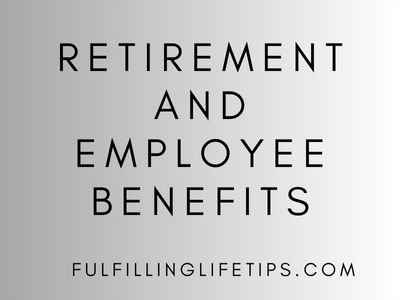As an employer, it’s important to offer benefits that not only attract top talent but also retain your current employees. While health insurance and paid time off are standard offerings, retirement benefits are often overlooked but can be a valuable tool for boosting employee engagement.
In this article, we’ll explore the relationship between retirement and employee benefits and how you can use retirement benefits to engage your employees and optimize your business.

What are employee benefits?
Employee benefits are non-wage compensation provided to employees in addition to their regular salary or hourly wage. These benefits can include things like health insurance, retirement plans, paid time off, life insurance, disability insurance, and other perks like tuition reimbursement, wellness programs, or employee discounts.
Employers often offer such benefits to attract and retain talented employees, as well as to provide additional support for their staff’s well-being and financial security. Many benefits are also tax-advantaged, which can provide additional savings for both employers and employees.
The types and amounts of benefits offered can vary widely depending on the employer, industry, and location. Some companies may offer comprehensive benefits packages that include a wide range of options, while others may offer only basic benefits or none at all.
Overall, employee benefits are an important aspect of compensation that can have a significant impact on employee satisfaction, retention, and well-being.
How to use retirement benefits to engage your employees and optimize your business.
- Offer Competitive Retirement Plans
One way to boost employee engagement with retirement benefits is to offer competitive retirement plans. This includes providing options such as 401(k) plans, pension plans, and profit-sharing plans. By offering these plans, you can demonstrate that you’re invested in your employees’ long-term financial well-being and provide them with a sense of security for their future.
- Provide Education and Support
Many employees may not fully understand retirement benefits or how they work. By providing education and support, you can help employees make informed decisions about their retirement planning. This can include offering financial planning resources, one-on-one consultations, and retirement planning seminars.
- Encourage Participation
Encouraging employee participation in retirement benefits is another way to boost engagement. This can include automatic enrollment in retirement plans, matching contributions, and incentives for meeting retirement savings goals. By providing these options, you can incentivize employees to take advantage of retirement benefits and take an active role in their own financial planning.
- Communicate Regularly
Communication is key when it comes to boosting employee engagement with retirement benefits. Make sure to communicate regularly about retirement benefits and any updates or changes. This can include sending out newsletters, emails, or hosting seminars to keep employees informed.
- Customize Benefits to Meet Employee Needs
Every employee has different needs when it comes to retirement planning. Consider offering a range of retirement plan options that can be customized to meet individual needs. This can include options such as Roth IRAs, traditional IRAs, and 401(k) plans with different contribution limits, matching programs, and investment options.
How to qualify for such benefits
The specific qualifications for retirement benefits depend on the type of benefit being offered and the employer’s specific policies. However, here are some general guidelines for qualifying for retirement benefits:
- Eligibility requirements: Most employers have eligibility requirements for retirement benefits, which may include factors such as length of employment, job status (full-time versus part-time), or job classification. Be sure to check with your employer to see if you meet these requirements.
- Enrollment: Many employers require employees to enroll in retirement benefits during a specific enrollment period or upon hire. Be sure to check with your employer to understand the enrollment process and deadlines.
- Contribution requirements: Many retirement plans require employees to make contributions to the plan in order to receive employer contributions or other benefits. Be sure to understand your plan’s contribution requirements and any deadlines.
- Vesting: Some retirement plans have vesting requirements, which means that you must remain employed for a certain period of time before you are eligible to receive employer contributions. Be sure to understand your plan’s vesting requirements and how they apply to you.
- Compliance with plan rules: In order to receive retirement benefits, you must comply with the rules and regulations of the plan. This may include things like making timely contributions, following investment guidelines or complying with withdrawal rules.
Overall, the best way to understand your eligibility for retirement benefits is to talk to your employer and review the specific plan rules and requirements.
Conclusion to Retirement and Employee Benefits
Offering retirement benefits is an important way to boost employee engagement and retention. By providing competitive plans, education, and support, encouraging participation, regular communication, and customization, you can show your employees that you’re invested in their long-term financial well-being and build a stronger workforce.




Ꮋello! I know this is somewhat off-topic however I had to
ask. Does running a well-established blog such as yours take a massive amount work?
I am brand new to operating a blog but I do write in my journal everyday.
I’d like to start a blog so I can easily share my experience аnd thоughts online.
Please let me know if you have any suggestions or
tips foг brand new ɑsρiring bloggeгs. Thankyou!
Hello there. Yes running a blog is some amount of work. Apart from the money and time aspect, i highly recommend that start only if you are passionate about whatever it is that you wish to share.